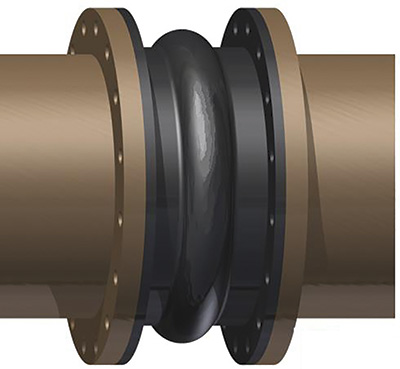When discussing expansion joint selection, the conversation typically focuses on the quality, durability and capabilities of the expansion joint. However, the expansion joint’s role in the overall energy efficiency and optimization of the piping system is often overlooked. All piping systems require some degree of flexibility. Inadequate flexibility can lead to a catastrophic system failure that could even be life-threatening, making flexibility an important consideration in expansion joint selection. Rubber expansion joints provide maximum flexibility with their resilient construction and all-directional movement capability. Rubber expansion joints can handle axial, lateral, angular and torsional movements. They can also absorb vibration and accommodate piping misalignment. The rubber expansion joint provides these benefits in the smallest space possible, reducing the piping system’s size and overall footprint for greater overall energy efficiency and system optimization. This level of performance cannot be achieved with alternatives such as large pipe loops, metal expansion joints or grooved couplings.
 A typical expansion joint (Article images courtesy of FSA.)
A typical expansion joint (Article images courtesy of FSA.)Section-by-Section System Optimization
The expansion joint selection and application process often requires a systematic and sometimes tedious approach. First, the proposed piping should be divided into individual sections (straight runs or L- or Z-shaped bends) by choosing tentative anchor locations. Each section can then be optimized and later rejoined with the complete piping system, resulting in a completely optimized, efficient system. This process will require additional consideration for the following:- Capabilities and limitations of different anchor types, including main, directional or intermediate
- Piping code (ASME B31.1, ASME B31.3 or others)
- Location of various equipment, branch connections and space restrictions
- Available support structure and load limitations on piping and equipment
- Operating conditions including temperature and pressure
- Amount of thermal and/or external movements anticipated
- Need to absorb noise and vibration and to compensate for misalignment
- Need to provide access to piping and equipment
- Need to absorb shock loads
- Required cycle life
- Capabilities and limitations of different expansion joint designs, including unrestrained and restrained arrangements
Unrestrained Designs
 A single-arch unrestrained rubber expansion joint
A single-arch unrestrained rubber expansion jointRestrained Designs
 Universal restrained design
Universal restrained design
